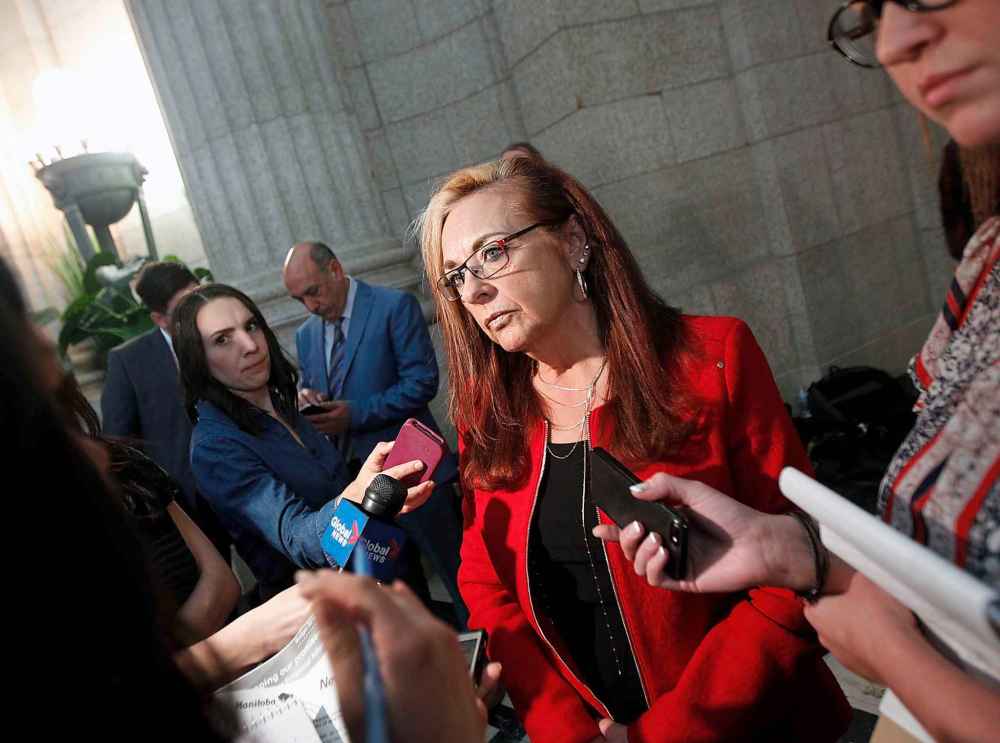MGEU advises Lifeflight nurses not to work on aircraft without physicians
Read this article for free:
or
Already have an account? Log in here »
To continue reading, please subscribe:
Monthly Digital Subscription
$19 $0 for the first 4 weeks*
- Enjoy unlimited reading on winnipegfreepress.com
- Read the E-Edition, our digital replica newspaper
- Access News Break, our award-winning app
- Play interactive puzzles
*No charge for 4 weeks then billed as $19 every four weeks (new subscribers and qualified returning subscribers only). Cancel anytime.
Read unlimited articles for free today:
or
Already have an account? Log in here »
Hey there, time traveller!
This article was published 13/01/2019 (1926 days ago), so information in it may no longer be current.
The union representing Manitoba’s Lifeflight nurses is worried their members may be asked to perform duties outside their scopes of practise due to a shortage of doctors on upcoming air ambulance flights.
Michelle Gawronsky, president of the Manitoba Government and General Employees’ Union, said there are five shifts in January where Lifeflight doctors aren’t scheduled to work. The first of those is Wednesday.
The MGEU has advised the six Lifeflight nurses it represents to not work on aircraft where physicians aren’t present.

“If they refuse to fly without the full team, without the proper team, it’s not job action. It’s not a political response to privatization. It’s got nothing to do with that,” Gawronsky said.
“The nurses have the right, and more so they have the professional responsibility, to refuse an unreasonable directive from their employer based on ethical, moral, professional (grounds) and most importantly the patients’ safety concerns. If you don’t have a complete team, how can you be providing the best care that you possibly can?”
The staff shortage is the latest concern in an ongoing back-and-forth with the provincial government as Lifeflight’s future remains up in the air.
Last summer, the province issued a request for proposals to consider privatizing government air services, including operations of Lifeflight and water bombers used to put out forest fires.
The wildfire-suppression services contract was awarded to Babcock Canada in November, but a decision on Lifeflight isn’t expected until early 2019.
Health Minister Cameron Friesen appeared to be caught off guard by Lifeflight’s scheduling issues.
“We were surprised to learn from the Lifeflight medical director that gaps remain in the schedule for the remainder of January”
– Health Minister Cameron Friesen
“Our government is committed to ensuring air medical services continue to be available. We were surprised to learn from the Lifeflight medical director that gaps remain in the schedule for the remainder of January,” he said in a prepared statement.
“We encourage Lifeflight doctors to fill these few vacancies on the schedule and to continue to work with government to provide a robust and sustainable air medical service for Manitobans.”
Sources with knowledge of Lifeflight’s operations told the Free Press the government may be considering putting respiratory therapists (RTs) on flights when doctors aren’t available.
On Monday, a department spokesperson said “no RTs are scheduled to take any flight” and the idea isn’t one government is presently considering.

All 16 Lifeflight doctors told the province in October they would consider quitting if the service was privatized, listing safety concerns.
A physician with 10 years of experience working with Lifeflight spoke to the Free Press on condition of anonymity. He said the government would be putting nurses’ and patients’ safety at risk if Lifeflight flew without doctors.
“It’s morally and ethically wrong for the province to even attempt to force (nurses) to work in that environment,” he said.
The doctor said dealing with those with influenza who need to be intubated and medically ventilated, stabilizing patients who are in motor-vehicle accidents and need chest tubes, and helping those who need resuscitation with central lines are examples where nurses and/or RTs shouldn’t be working alone.
“It’s clearly beyond their scope of practise,” he said. “To care for these patients, it’s been long established — and rightfully so — that you need a physician-nurse combination.”
Lifeflight provides a 24-hour air ambulance service and its medical staff take about 400 to 500 trips per year. They help critically ill or injured patients outside a 200-kilometre radius of Winnipeg. A flight crew would consist of a doctor, a nurse and the pilot.
jessica.botelho@freepress.mb.ca
Twitter: @_jessbu










